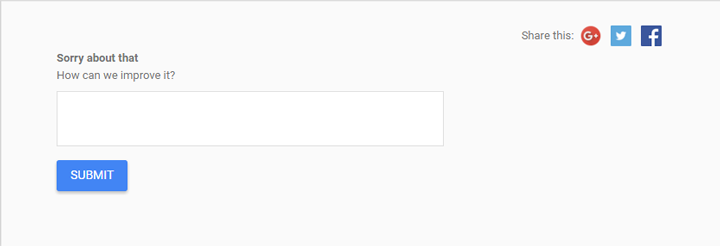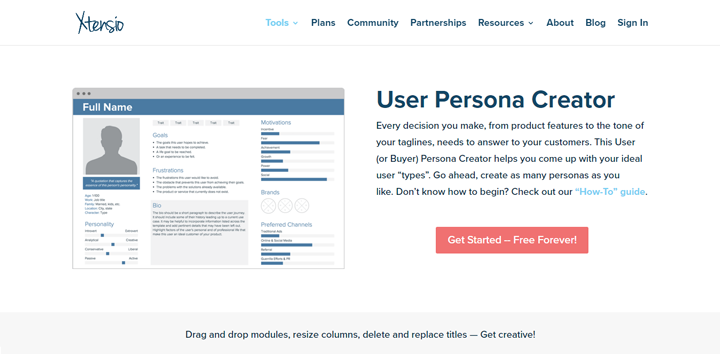How to Advance Your Business by Creating User Personas
April 22, 2016 written by Tanya

When it comes to designing a website – whether it is the flow, the content, or the layout – we have the tendency to take a step back and view our users as exactly that — users. We plan for the ideal user behaviour, trusting in our ideal design flow.
We research them, sure. We dig up demographic data and do our homework.
But our users aren’t the impersonal, unfeeling data points we make them out to be.
They are people.
Realistic people with realistic behaviour
Each user that visits your website has a goal they want to achieve. They have issues they want solved. They have backgrounds that, in all probability, will decide how they will act on your site.
And, as tends to happen in most cases, may share similar concerns and frustrations as other users.
What you need to do is collect information and anticipate their behaviour – at a core, personal level – in order to help them find what they’re looking for.
Somebody visits your online store to just buy two things? Give them the option of a simplified checkout process. Someone needs an item in a hurry? Provide, if you’re able to, a faster delivery option.
Anticipate, anticipate, anticipate.
So, how do you get all this information about your users?
One of the fundamental things about being human is that we feel the need to share how we feel. Users want you to know if you’re doing something wrong, because it makes things harder for them. Users want you to know if you’re doing something right, because they don’t want you to stop doing it.
The trick is in knowing how to ask.
1. Get a broad sense of the kind of users you have
Start with finding whatever data you can by yourself. If you don’t have Google Analytics, or any other analytical tool, you might want to start by taking care of that.
Find as many ways to capture user data as possible. Google Analytics, for example, gives you quite a bit of Demographic and Interest data.
What this will do is ensure that you at least begin by asking the right questions.
2. Narrow it down
Look into considering a user recording tool, like Hotjar, that allows you to capture the actual kinds of flow of users on your site.
Contrast this with your expected flow. Are there any kinds of user behaviour that you can extend to a particular personality characteristic?
3. Get Specific
Now that you have a little background, give users the option to leave you with feedback. Let it be open ended – remember, they’re helping you by filling in this information. So, try not to force it on them.
Keep communication channels open, maybe via social media, or through non-intrusive surveys on your site. Reviews work, too.
Google has a really cool way of checking if the support for their products work at the end of every article.

And if you click no?

Simple. Effective. Non-intrusive.
Open up the chance to get to know more about the people using your site and the difficulties they face whenever possible.
Some companies use Twitter really well to accomplish this.
Slack’s Twitter account
And if you provide an offline service, all the better! Try to get a sense of how your customers interact with your product and ask for the chance to interview them. Pay close attention to their thought process, frame of mind at the point of time that they interact with your product, and the factors that contributed to their overall experience – whether good or bad.
Okay. I’ve reached out to my users. What now?
Now, we use a concept that we call segmentation.
Take a look at the information you have on your users. Even if you don’t have a lot of user data, you will intuitively know certain kinds of user behaviour relating to your product at a high level. The data serves to back-up your intuition.
You could just as easily – if you know your customers well – say, “I believe that the majority of my users can be grouped into certain categories.” And then take it from there.
Keep in mind, though, that the more data you have? The more concrete your assumptions will be.
Alright, let’s get started!
1. Group users into customer types
Make sure that each of these types actually make sense to the product you’re building.
If you’re trying to get insight into what content you need to create, group users by the different ways in which they consume your existing content. If you want to launch promotions for your new product, group them by the different ways in which they would find the product useful. For a website, take a look at what sections of the site interest them, and how they look for and find these sections.
2. Create User Personas for your most active users
Now, we get to the fun part!
What we are going to do is create a semi-fictional account of each customer type. Remember that the number of customer personas you need to create will depend on your business – but a good number to start with is around 3 or 5. You don’t want to dilute your brand focus.
Start by picking the most active customer type, and outlining a profile that best describes their goals and pain points.
I’d recommending using Xtensio to get this done – it’s a really handy tool, and it’s free!

Sign up for an account, and head on over to their User Persona Creator.
The template is completely customisable, and comes with a set of prompts that makes things easier to work with for your first time. Feel free to change around the section titles to suit your objective, and rearrange the sections themselves according to the information that is most important to you.
When you’re done, you should have something that looks like this.

Sample User Persona featured on Xtensio
3. Use these Personas to gain customer perspective
Once you have your personas created, sit down with the rest of your team to see if you’re really doing everything you can to cater to your customers.
Put yourself in each persona’s shoes. Are you solving their problems? Are you adding to their frustrations? If you were them, would you have a good experience interacting with your product or service?
4. Shape your design, content, marketing, and business decisions around your personas
Hang your personas up around your workspace. Revisit this process every once in a while to see if your users or their behaviour has evolved. Use your personas to gain insight on what branding and marketing channels would be best suited to reach out to them on. Use them to decide the type of message you need to send to each kind of persona.
Remember, it’s the 21st century. Users don’t need to fit themselves around brands anymore. It is you that needs to adapt to your users needs and concerns.
Personas are powerful tools, when used effectively, that help you achieve exactly that.
Internet Academy claims no association with the websites or user accounts featured in this article. If one of the accounts or images featured above belongs to you, and you would like to issue a take-down request, please let us know at [email protected].




